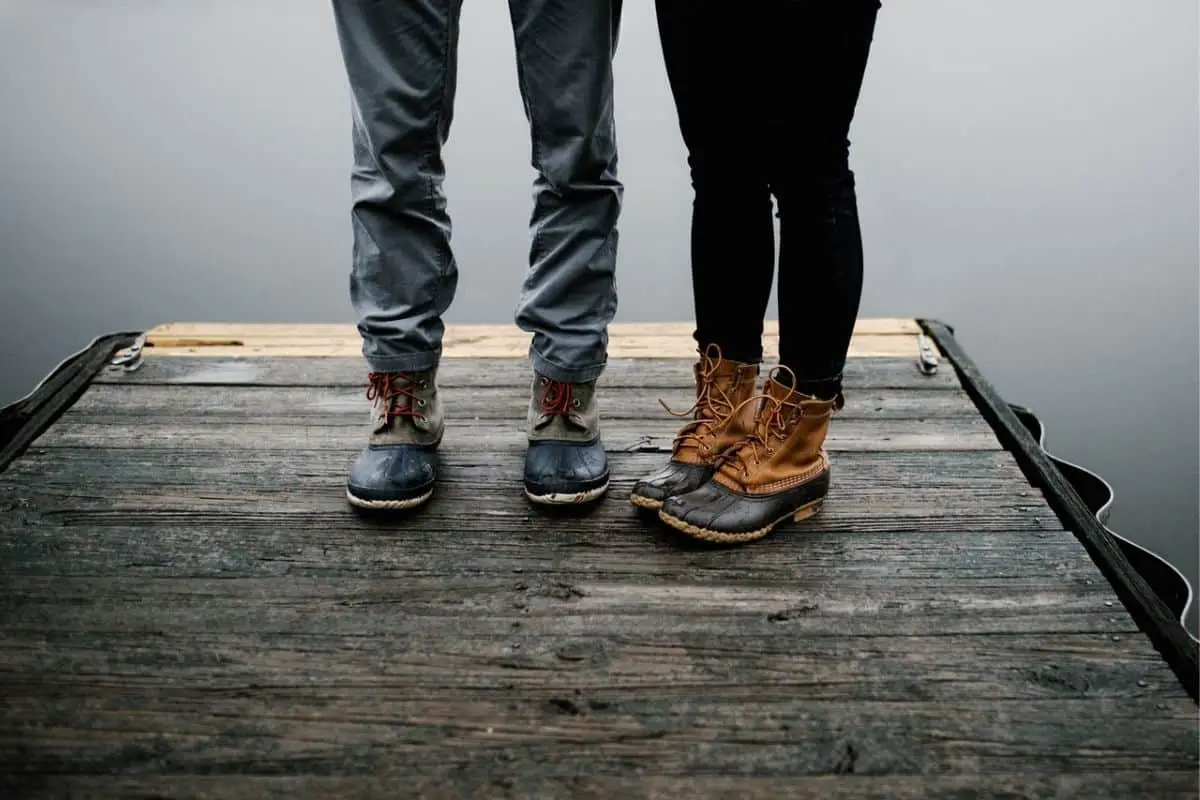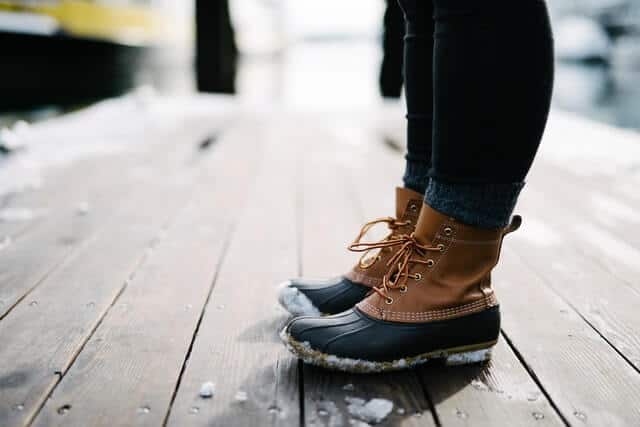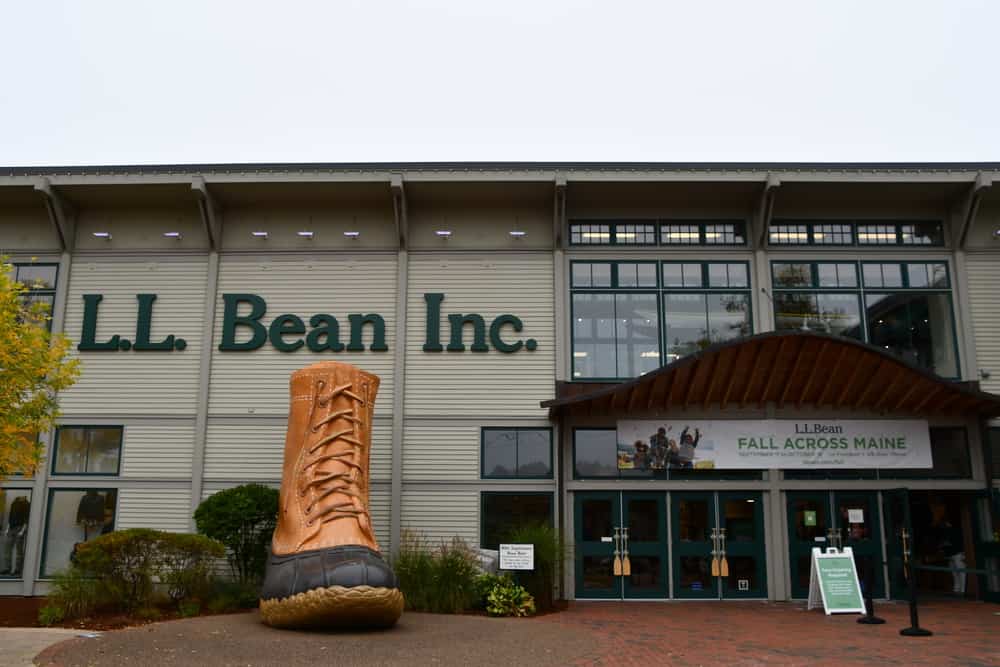No matter what boots you have, eventually, it’ll come time to give them a nice cleaning. Over the years I’ve learned the best process on washing L.L. Bean boots, and a few tips that really help to get the dirt off.
To wash L.L. Bean boots, you’ll need to remove any surface dirt, treat the leather with a long-term protectant, treat the rubber soles with a long-term protectant, and develop habits to reduce odor over time.
Here’s everything that you need to know about keeping your LL Bean boots looking new and clean!
Remove Surface Dirt
Start by gently brushing down your dry boots with a soft bristle brush. You can use a shoe brush – available at most major retailers – or a soft-bristle toothbrush (though this will take longer considering its small size) or a hairbrush. This will dislodge any surface dirt and make the next part of the process easier.
When you’ve removed as much dirt as possible, use a lightly dampened, but not wet, cotton or microfiber cloth to wipe down the entire boot. Though large amounts of water have a chance of staining the leather, a light wipe-down won’t damage it.
Pay special attention to any deeper crevices or stitching, as this is where dirt and debris tend to collect.
Apply a Protectant to the Leather
Once the surface is clean, apply a boot protectant to the leather. These protectants are often made from combinations of wax and natural oils to soften and strengthen the leather over time.
The best protectant to use is L.L. Bean’s own Boot Guard (view on Amazon), though any leather weatherproofing balm will work.
These products are designed to remove deeper-ingrained dirt and debris while also conditioning the leather. This will leave the leather much softer and more supple than it was before, meaning it’s likely to last longer.
Apply the balm of your choice with a clean cloth in a thin layer, using circular motions to work it into the leather. You can buff the shoes with a soft brush after allowing the protectant to soak in for a few minutes.
Treat the Soles
Once you’ve treated the leather, shift your focus to the rubber soles of the shoe. As before, make sure that they are clean of any surface dirt; you can use more water on the rubber without worrying about damage. You may use a soft-bristle toothbrush to get into the tighter ridges of the soles.
To protect your soles long-term, use a rubber protectant, such as the one produced by Armor All for vehicle interiors. This will stop the rubber from over-drying and cracking or warping. For this particular product, to apply, shake it well and use a clean cloth to spread it evenly across the sole.
Apply it in a thin coat to avoid streaking or contact staining.
Reduce Odor
The final step in the process is to treat the inside of the shoe. Because you’ve likely worn them all winter with thick socks for vigorous activity, they may have an unpleasant smell to them. This is normal and a relatively easy fix.
To eliminate existing odors in your shoes, simply sprinkle the inside with baby powder or baking soda. Allow them to sit for several minutes or until the smell is noticeably gone, then shake out the excess powder.
For more serious smells, you can lightly spray the inside with a disinfecting spray. Avoid completely soaking them; a lightly damp interior will dry completely while a soaked one may invite mold growth.
You can do this regularly to neutralize the odors before they have a chance to grow. You should also make sure your boots are stored in a warm place that will allow them to dry completely between uses.
What to Avoid When Cleaning L.L. Bean Boots
As long as you follow the steps and guide above you should have no issues keeping your boots in the best condition possible. There are a couple of things that should be avoided since they bring the risk of damaging the material on your boots.
- Don’t put them in the washing machine – L.L. Bean boots aren’t safe in the washer and will most likely ruin the shoes and could also damage the machine itself. The dryer should also be avoided since the high temperatures are bad for the boot materials.
- Avoid harsh soaps and detergents – Avoid using harsh soaps and abrasive scrubbers on your boots. This can lead to scratching, tearing, or discoloration, which is not something we want to do to our boots!
- Keep them out of the sun when drying – Try to avoid storing your boots in the direct sunlight or too hot of an environment. This can lead to a weakening of the leather and rubber and may cause it to crack, split, or simply disintegrate.
Make sure to follow the tips above to make your L.L. Bean boots durable and long-lasting!
Final Thoughts
High-quality, and especially leather, winter boots can be intimidating. Many people fear ruining the material, as they’re unused to having to clean it. Fortunately, the kind of materials used in LL Bean boots is designed for longer wear, meaning that it’s designed to be maintained.
As long as you are regularly maintaining your boots and storing them properly when they are not in use, you should be able to use them for many, many winters to come!



